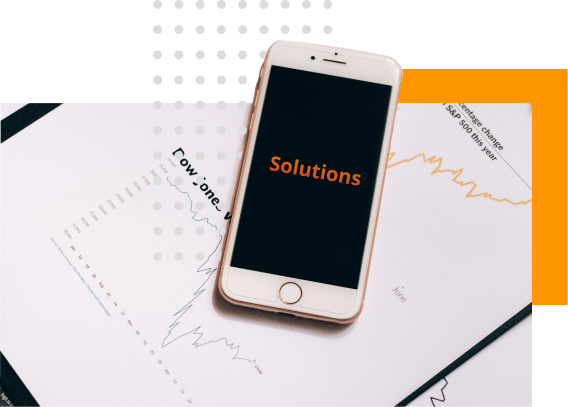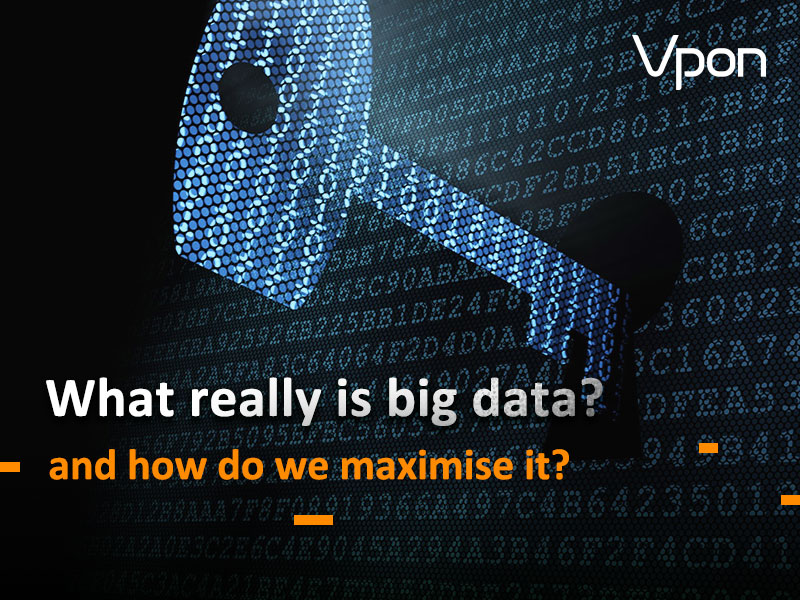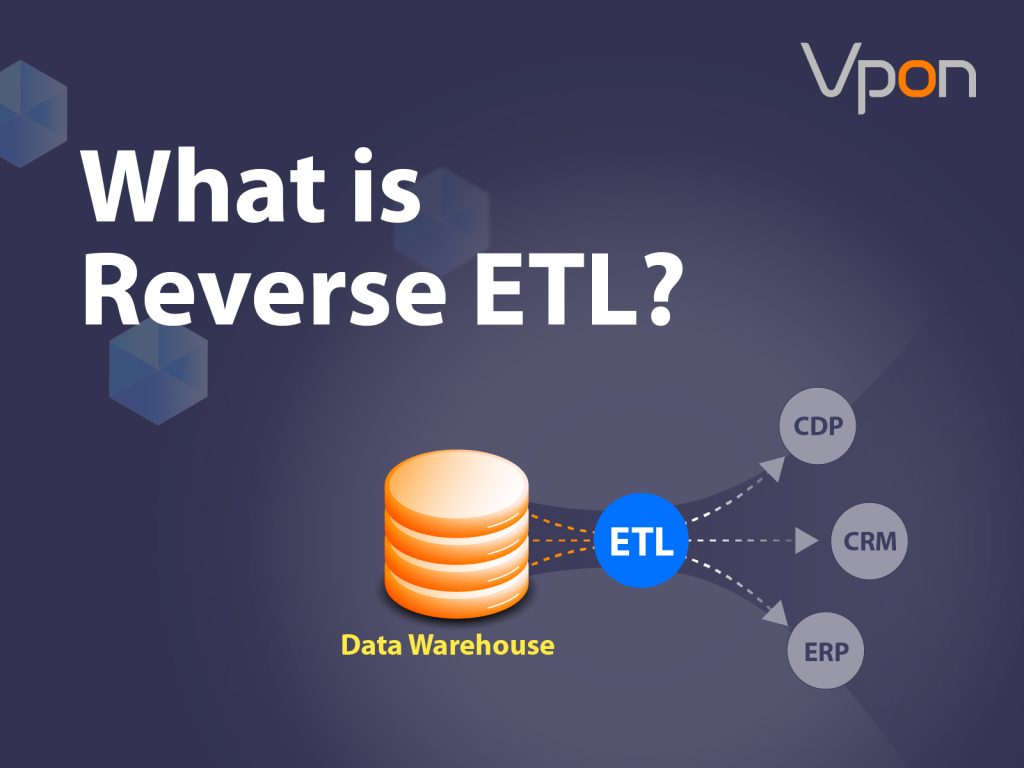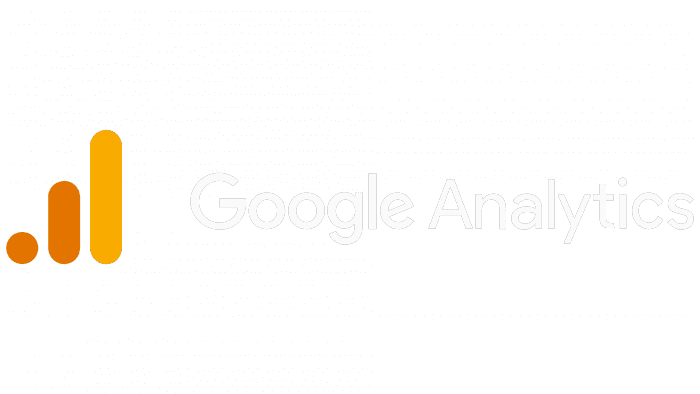The concept of ‘big data’ has been around for a while, but it’s taken a long time for businesses to really understand what that means in practice across so many industries, and the specific context that each business finds itself in.
As the methods of utilizing big data continue to improve over time, there’s never been a better time as a business leader to understand what big data is and what opportunities it could offer your business — from improving the customer experience to staying ahead of the competition.
Table of Contents
What is Big Data?
The definition of big data has evolved over time but has now settled based on a concept called the ten Vs. Let’s take a look at these elements:
- Increased Volume
- Increased Velocity
- Increased Variety
- Increased Veracity
As the original three requirements, big data is predominantly considered to be data that meets these three criteria — it increases in volume, the number of different data types available (its variety), and the speed at which it is generated (its velocity).
This is a reflection of the way in which our ability to collect data has improved, meaning that the scale of data available increases dramatically over time.
Since then, there have been seven additional qualities that have come to help define what big data means, and the expectations we should have when using it.
Variability is an expectation that big data by the very nature of the fields and sources, will vary significantly. This can also be a reflection of the inconsistencies and variable data quality that can often represent a big challenge.
Veracity reflects the confidence that we should (but may not) have the sources of our data.
The validity of the data is another key concern, tied closely to veracity. The setting and adherence to standards will improve the validity of the data and reduce the time needed to clean it.
Security risks can increase when utilizing big data pipelines, so any additional vulnerability needs to be closely considered.
With huge amounts of data coming in, the volatility of data is another consideration. Should the relevancy of certain data sets be time-bound, this will need to be factored into retrieval for analysis.
As users of big data analytics will generally consume the data through dashboards and reports, data visualization is one more element to bear in mind. If the data is difficult to visualize, it will be difficult to achieve utility from the data set.
And finally, the most important element of big data is value. All the big data analysis in the world is pointless without ensuring that it provides business value. This is why it is so important to set objectives from the start of a big data project, to provide accountability and ensure that the business can see the benefit.
Sources of Big Data
There are four primary categories that cover the sourcing of big data. These are:
- Media
- Web
- Cloud
- IoT
Media
Media is perhaps the most clearly apparent data source, covering the exponential growth seen across the world in the ability of individuals to produce content at scale in a number of different mediums.
Web
The web serves both as a facilitator of media content — primarily via social media sites that center their entire businesses on user-produced content — and also as a broader store of available public data. This can be the accessibility of detailed by-the-minute weather statistics or the breadth of Wikipedia.
Cloud
The flexibility provided by cloud computing providers has allowed for an increase in the level of complexity of tracking and monitoring alongside the storage of this data. This has meant that the ability to track users — often for marketing purposes — has made the cloud a significant driver of data availability.
IoT
Last but not least is the Internet of Things, with billions of devices having internet connectivity and allowing for wide-scale data collection, be it smart agricultural machinery all the way through to your wifi-connected refrigerator.
Advantages of Big Data
There are many different benefits to the use of big data, and businesses are limited only by their ability to properly collect and utilize the data for the specific purpose at hand — often referenced as big data analytics. Some of the most common scenarios in which the use of big data analytics can provide significant advantages to the running of businesses are:
- Customer acquisition and retention
- Cost optimization
- Supply chain efficiency
Customer Acquisition and Retention
By using the huge amount of data available from third-party platforms used for customer acquisition and combining this with all internal CRM data, many businesses have been able to drive substantial improvements in the cost efficiency of customer acquisition and retention.
Marketing budgets can often be cut dramatically where wastage can be identified and reduced. The ability to track not only base-level acquisition metrics but more complex metrics like lifetime value allows marketing spending to be assessed with a much better idea of what the benefit is likely to be over the longer term.
Similarly, the ability of big data analytics to help identify where there are opportunities to build on customer touchpoints to improve the chances of retention is huge — and provides another means of effectively reducing the cost of acquisition.
Cost Optimization
The application of big data analytics can also assess the opportunity for improved efficiency across internal processes and resources. One such application could be surfacing insights from the data as to the optimal way to resource a particular department to maximize the KPIs they are accountable for — providing decision-makers with a better view of the way operations are running.
Supply-Chain Efficiency
In some ways, this is a specific example of cost optimization, although it can apply more broadly as well. By assessing the often vast data sets relating to complex supply chains, opportunities to improve efficiency can be found that reduce costs but also improve different metrics, such as product depth, based on optimizing the way in which different parts of the supply chain are utilized.
Challenges of Big Data
There are a number of challenges associated with big data, and these have been the primary reason that it has taken a number of years for the utilization of big data to see greater adoption.
There are two main challenges, which are:
- The ability to collect and store the data
- The ability to surface insights from the stored data
These challenges have both been significantly mitigated by the rise of solutions to make the transition much easier for companies. Collecting and storing data is now increasingly straightforward, mostly as a result of the growth and evolution of cloud computing platforms such as Azure and AWS.
These support much more complex data flows, with the data engineering tools making the building of data collection pipelines much more accessible. In parallel, there has been significant growth in the area of data engineering, with a whole cohort of skilled workers building a set of best practices that creates industry standards that businesses can utilize.
Surfacing the insights has also been aided by technology, with more and more platforms providing big data analytics services that allow for a varying degree of in-house resources to manage the utilization of big data.
Top 10 Industries Using Big Data Applications
Big data applications can be found in almost every industry, but there are a number of big industries making waves as a result of the strength of their applications.
- Government
- Banking
- Education
- Transportation
- Media
- Healthcare
- Manufacturing
- Finance & Insurance
- Retail and Wholesale
- Energy
Big Data in Government
Perhaps the most secretive use of big data is by government departments with a large security remit, such as the Department of Homeland Security. By analyzing public data at scale, they can be better equipped to handle possible security incidents.
The government also uses big data for a wide range of regulatory enforcement purposes, with models being able to inform where there could be instances of fraud or other regulatory infractions.
Big Data for Banking & Finance
With so much money at stake, it’s no surprise that many of the earliest adopters of big data were in the financial sector. From the ability to track sentiment online to the data science of thousands of different market indicators, banking has seen a huge amount of applications of big data to drive trading efficiency, limit fraud, and much more.
Big Data for Education
It’s not surprising with the number of academics studying big data that the education industry would see forward-thinking applications. One interesting use case is the ability of educational institutions to use big data analytics as a way of assessing course understanding and even boredom from data relating to learning material consumed through online courses.
Big Data for Transportation
Congestion has long been a significant problem for transportation departments, and big data is helping solve those issues through complex analytical models. This is being deployed across a wide range of use cases, from city planning all the way through to optimizing bus routes.
Big Data for Media
The media has also seen heavy utilization of the opportunities presented by big data as they look to drive engagement across an evolving landscape of media consumption. The ability of big data analytics to assess millions of different data points and provide tailored content to individual users has been the focus of this sector.
Big Data for Healthcare
Despite challenges with privacy concerns, healthcare has also seen some impressive applications of big data both for predictive analytics to drive preventative healthcare as well as the ability of machine learning to assist in the diagnosis of particular conditions.
Big Data for Manufacturing
Manufacturing is one of the big beneficiaries of big data analytics, with both supply chain optimization and demand forecasting areas that have made significant progress. In an era of ‘just-in-time’ supply chains, the benefits are likely to continue as the application evolve.
Big Data for Finance & Insurance
Being able to utilize data to calculate risk is what insurance is all about, so it’s a perfect fit for big data. Insurance providers are increasingly using big data analysis models to provide the most cost-effective approach to providing insurance.
Big Data in Retail
Retailers have been able to track shopping behavior both on- and offline, making the ability to respond effectively from a staffing perspective much more data-driven. There have also been developments in tracking the way in which shoppers move around the store so that they can be handled as effectively as possible.
Big Data in Energy
Energy is a very interesting area as far as big data goes, as the granular data provided by smart meters allows for much more effective planning of required resources to meet consumer needs.
Conclusion
It’s clear that while big data has been discussed for several years now, we’re finally reaching the point where adoption is accelerating and providing a competitive edge to those businesses that embrace it. Fortunately, the amount of support available to both collect and leverage the data has never been better, so it’s a perfect time for all businesses to assess how they might use big data to drive improvement.
So how does Vpon Big Data Analyze Data?
Businesses across different industries wonder how each of them could use big data for business development and decision making. How could one be certain that the data are being used in the most effective way? This can be done through Vpon’s data solution, which includes data collection, data analysis, and data application.
1. Data Collections
There are various ways for a business to collect first party data, from traditional user databases and surveys, tracking browsing activities on websites and apps, IoT usage, & more. On the other hand, external user data is becoming more popular in the market too. This includes second-party data that are acquired from a trusted partner and third-party data that are acquired from a data aggregator.
When there is a high variety and volume of user data, massive data storage will be needed. To fulfill this basic requirement of big data, more and more businesses are turning to cloud services for a relatively flexible and expandable storage solution.
2. Data Analysis
Data from multichannel source are usually raw data that includes structured and unstructured data. Raw data cannot be used directly, they would first be centralized in a system called ‘Data Lake’ until a data engineer or a data scientist process them by:
- Data inspecting
- Data cleansing
- Data transforming
3. Data Application
Visualizing analyzed data and validating with responding actions. Commonly seen data application in business includes user grouping, data report, and data dashboard. Through big data analysis and AI algorithms, one could label users based on their type, behavior, preference, and actions, to distinguish the fittest user group for marketing purposes.
Data report is an extract of valuable insights and perspectives found in big data, it is extremely useful for supporting decision-making and planning problem-solving strategies. PDCA (Plan, Do, Check, and Action) is an example of an iterative design and management method used in business. The model is useful for the control and continuous improvement of the data report usage.
Similarly, a data dashboard is a strategy-supporting system with a customizable and interactive user interface. Businesses could explore countless data sorting and grouping result and pick up insights that support upcoming marketing directions and planning.
▍Looking for Big Data Application? Learn more about Vpon’s Real Examples:
Experience The Digital Transformation









